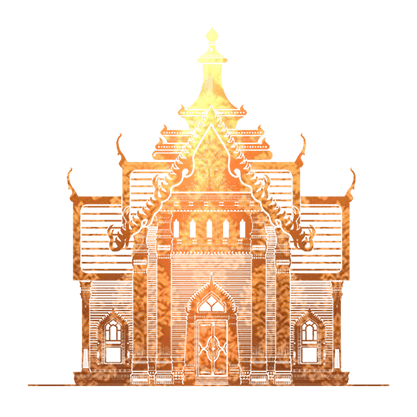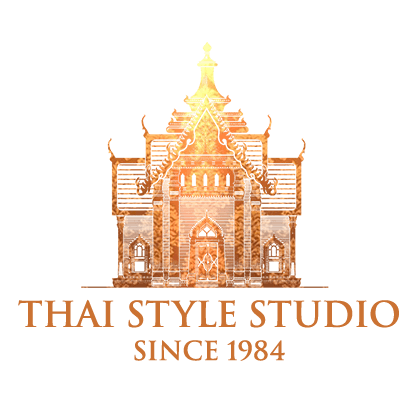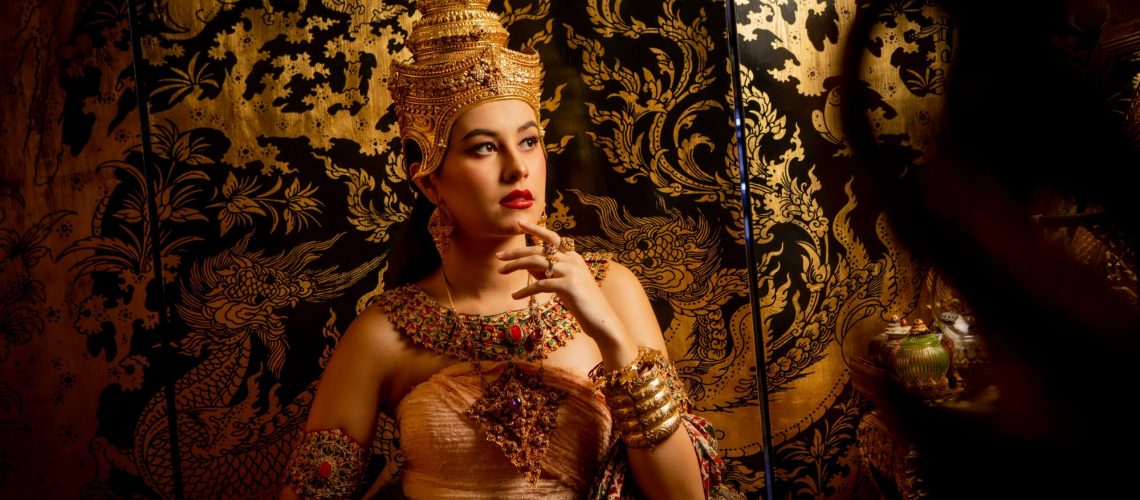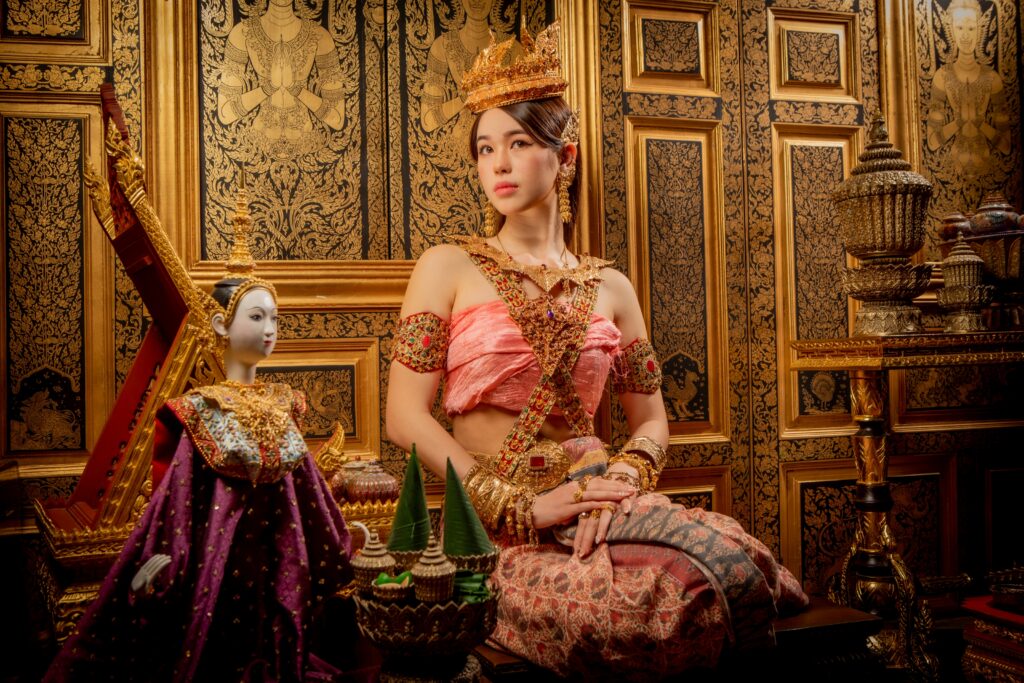
The fabric tells us a lot of things, including the wealth and social status of those who wore them. In the early days of the era, most fabrics were imported from India , later on the royal office came up with its own pattern for the fabric and shipped them to India to get the print done. There was the archaeological evidence from the city of Kucharat, in Surat Thani that showed the “Pha Lai Yang” (Siamese chintz) – which was the prestigious kind, tailored exclusively for the Kings and the royals. No commoner can own this kind of fabric unless they were given to them by the royals.
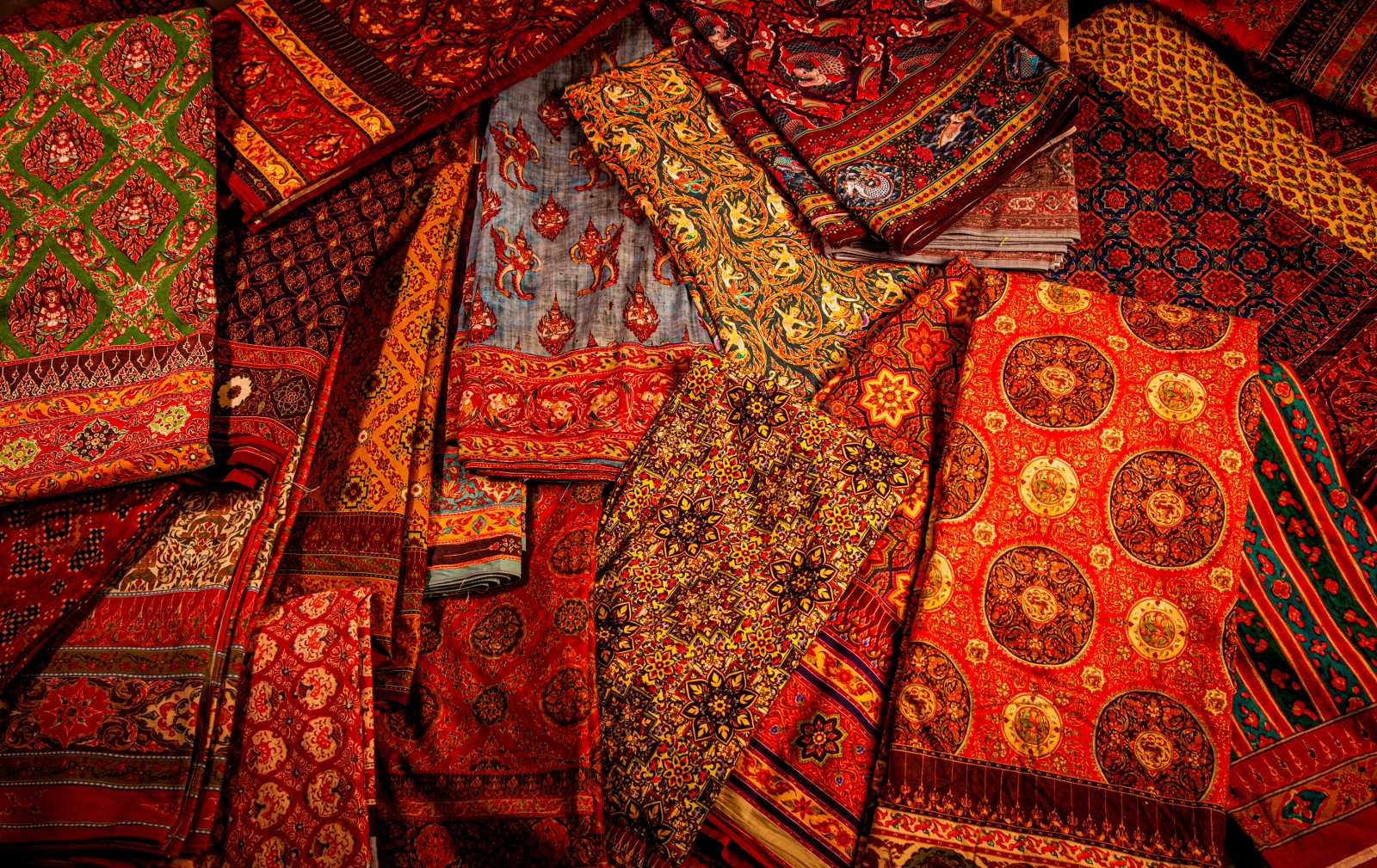
In early Ayutthaya, women usually let their hair down or pull it up in bundles or braids. Later on, as the wartime approached, they changed into the shorter hair-do that would allow them more physicality in combat.
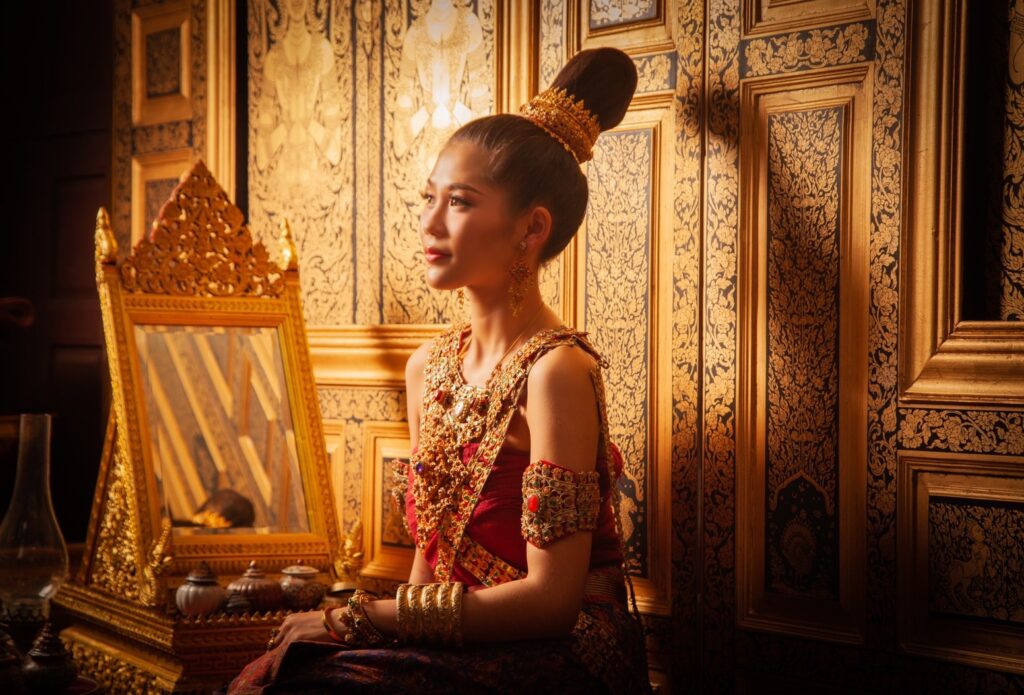
The exhibit of Song-Khadong
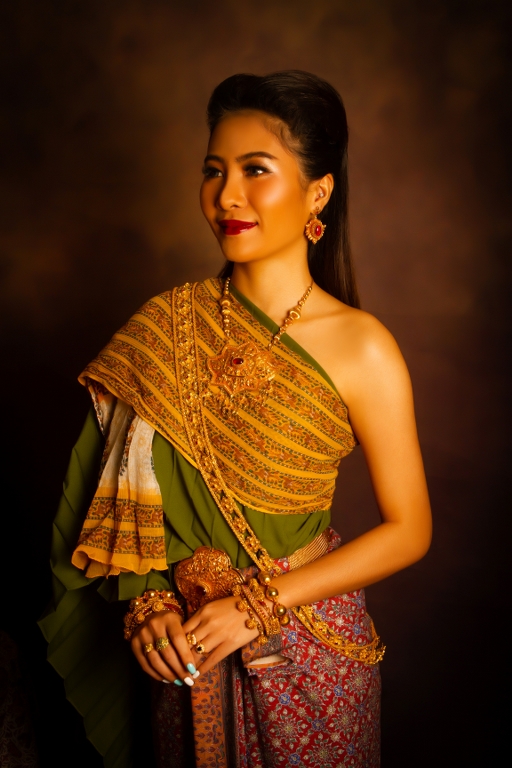
*knowledge Due to the short brim hair looks similar to the hair of the Mahad-Thai of men. Nowadays, it is found that many places refer to women’s Peek hair as interior hair. which is an inaccurate call In fact, Mahadtai Hair is the name for men’s hairstyles only.
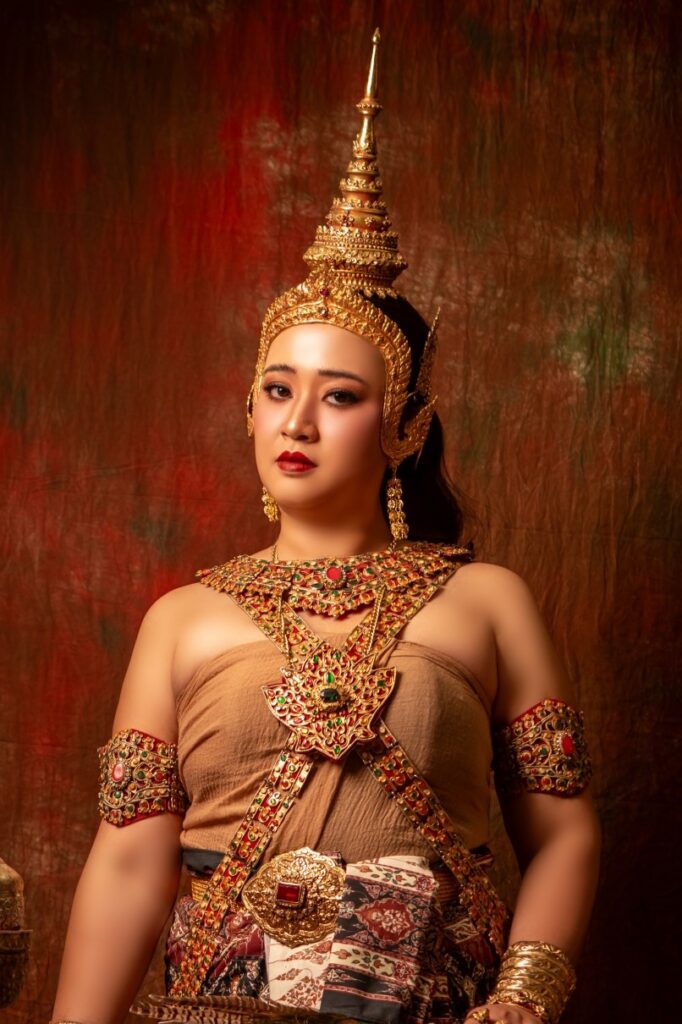
The accessories and ornaments in Ayutthaya can be categorised into 2 main types. One was the royal ornament – worn by Kings, royal families and the noble. The majestic characteristics of the accessories were obviously distinguished from the commoner by its prestige, majestic elements. It includes the fineries made of golds and jewels. The commoner’s fashion was less splendid. The fashion was way more normal – rings for man and gold/silver earrings for women. If they were from bourgeois class with money, they usually wore the bracelet and anklet as a child.
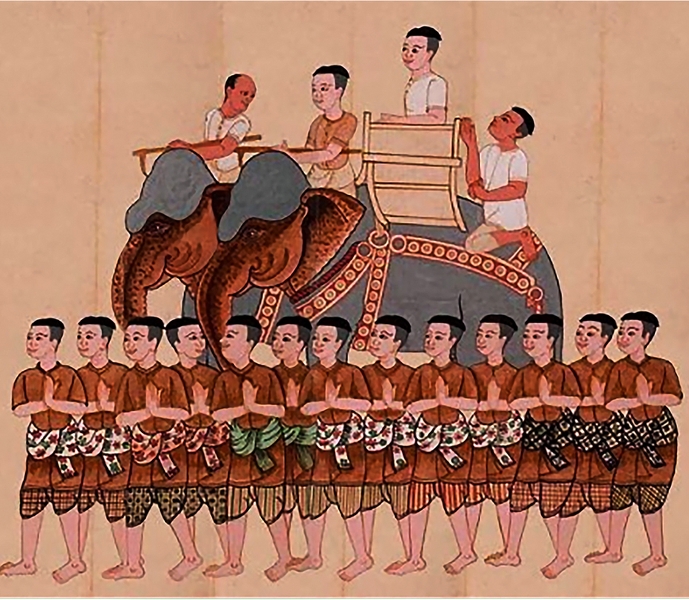
พระนารายณ์มหาราช
Royal servants were having short hair cut, while majority of the male commoners were letting their hair grow and tied up (same as ‘Soong Khadoong). They usually wore short pants that went dow to the shins, on top of the pants was a loincloth hiked up to their hips – which was influenced by Khmer clothing style. The top were the long sleeves, v-neck shirt with pieces of clothes lock-stitched on the sleeves’ and shirts hems.
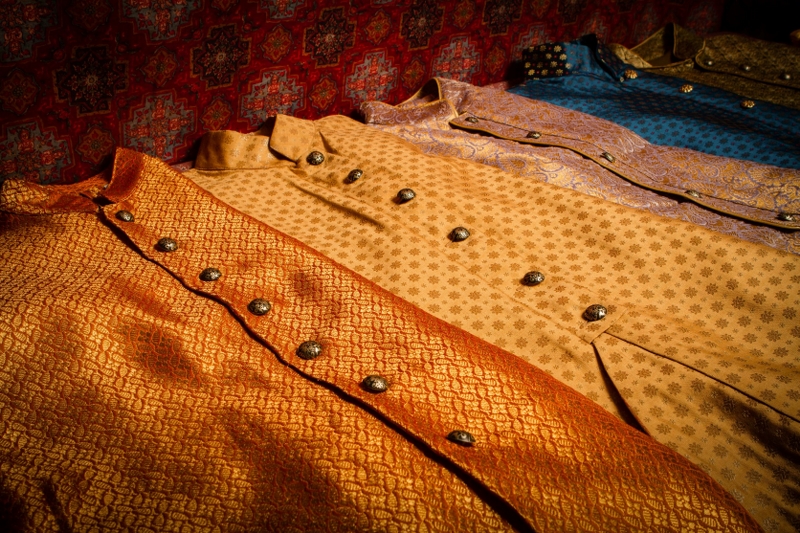
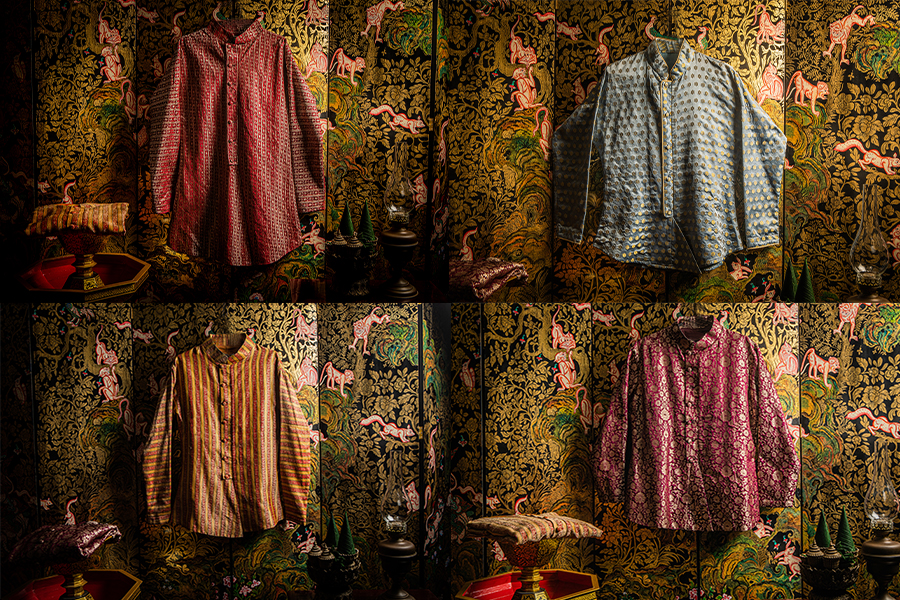
The exhibit of Yang Noi shirt
‘Yang Noi’ is a popular design of the top among aristocrats. The shirt was the adaptation from Indian’s Kurti tops. Yang Not is a long-sleeved, straight up collar shirt with the fabric pulled tight around the waist. The lower hems are sewn in overlapping patterns. Another astounding characteristic of Yang Noi tops, is that the shirt was tailored using a single piece of fabric – folding over and sewn. Fabric used in tailoring of Yang Noi varies from Yerabab, Khem Kab, and Atlat Fabric.
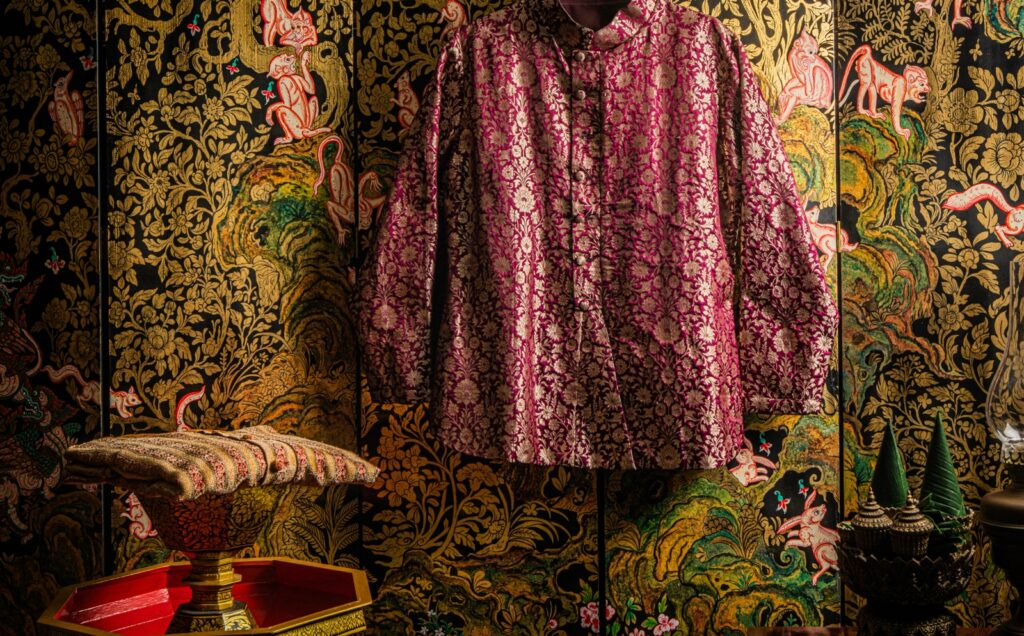
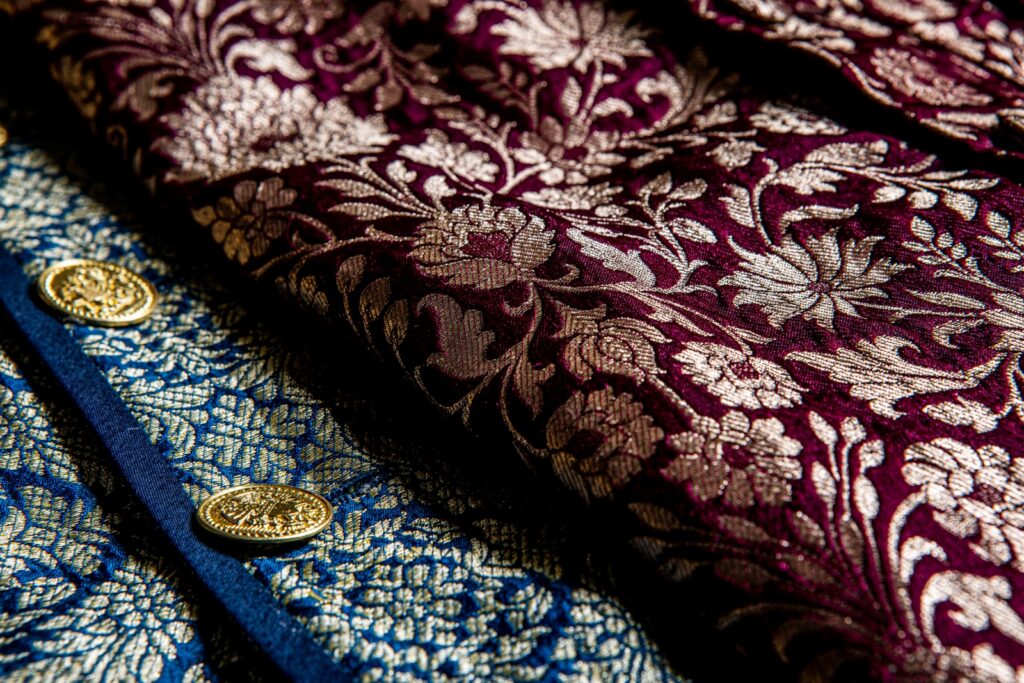
Yerabab shirt is made of a specific fabric, weaved with gold and silver threads. The fabric was first used as an official, palace attire in the Ayutthaya time, until the early years of Rathanakhosin. Yerabab was imported from Indian and Persia.
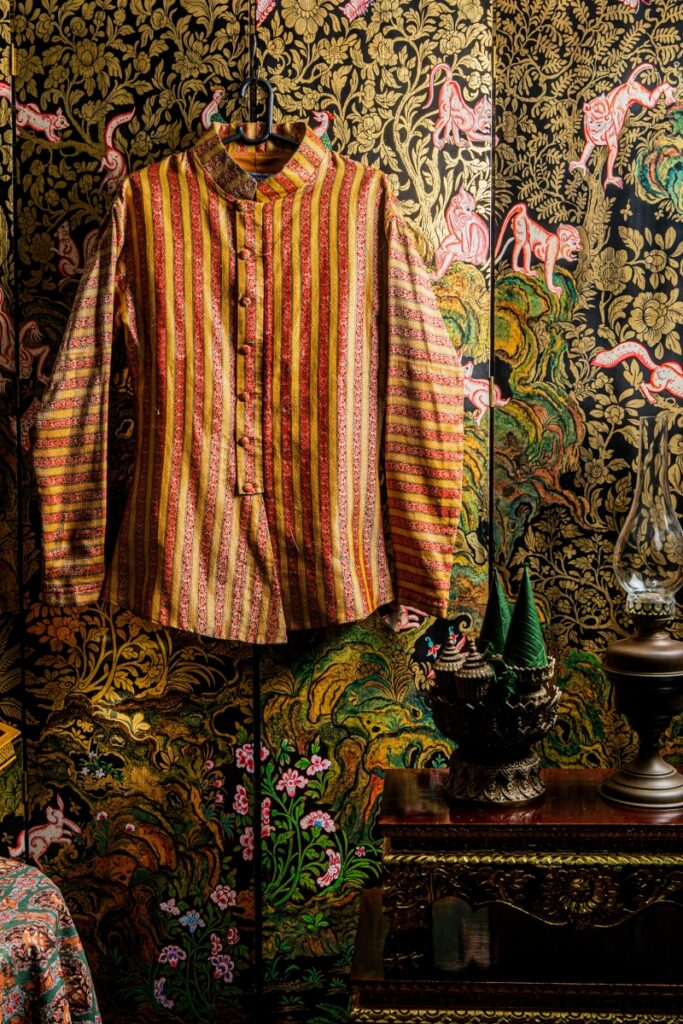
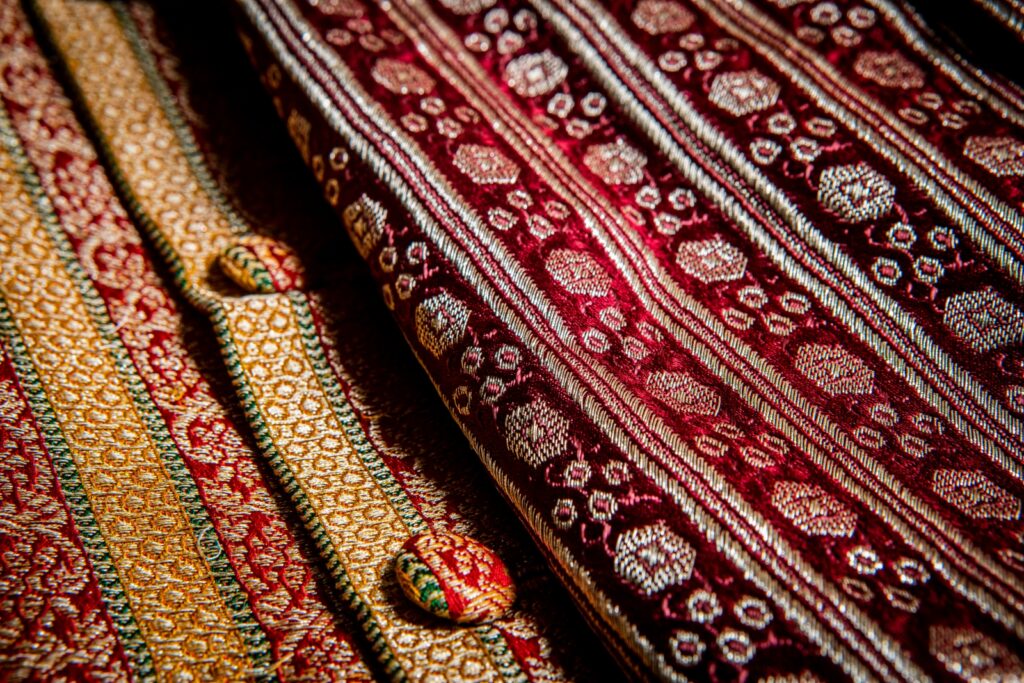
Khem Kab was the fabric sewn with gold and silver threads, the same way as Yerabab. They were both imported from India and Persia The pattern though, is different – with the gold and silver threads sewn together with the silks .
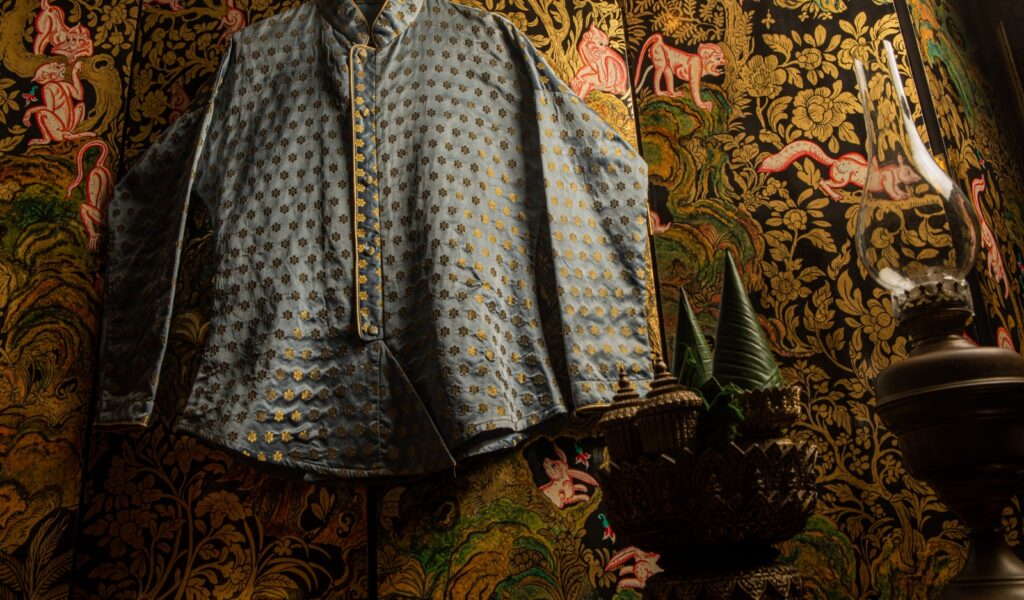
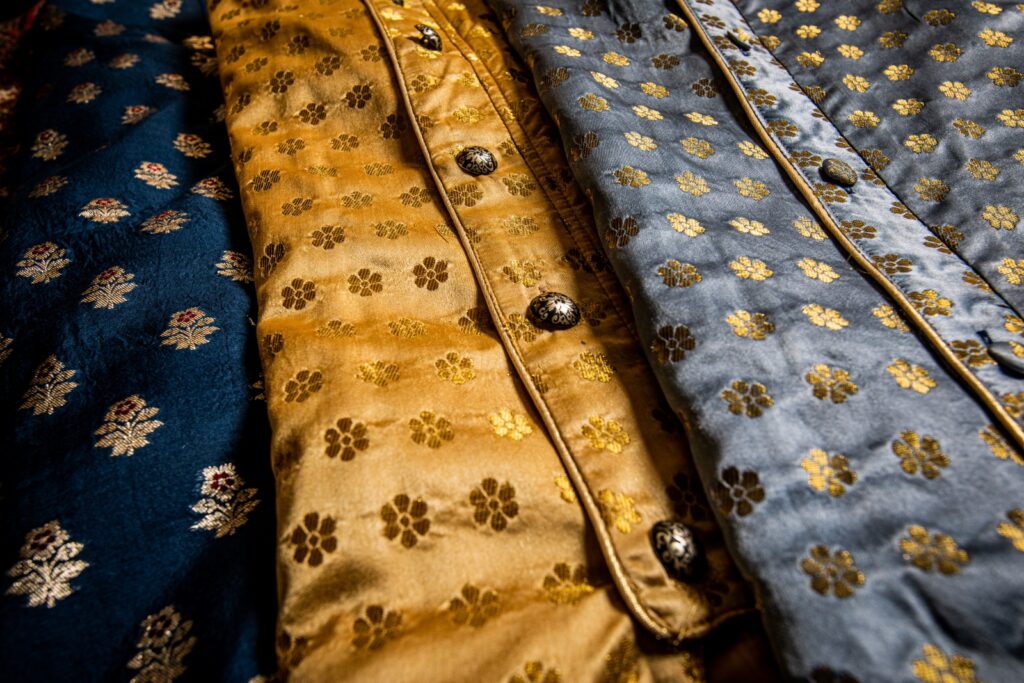
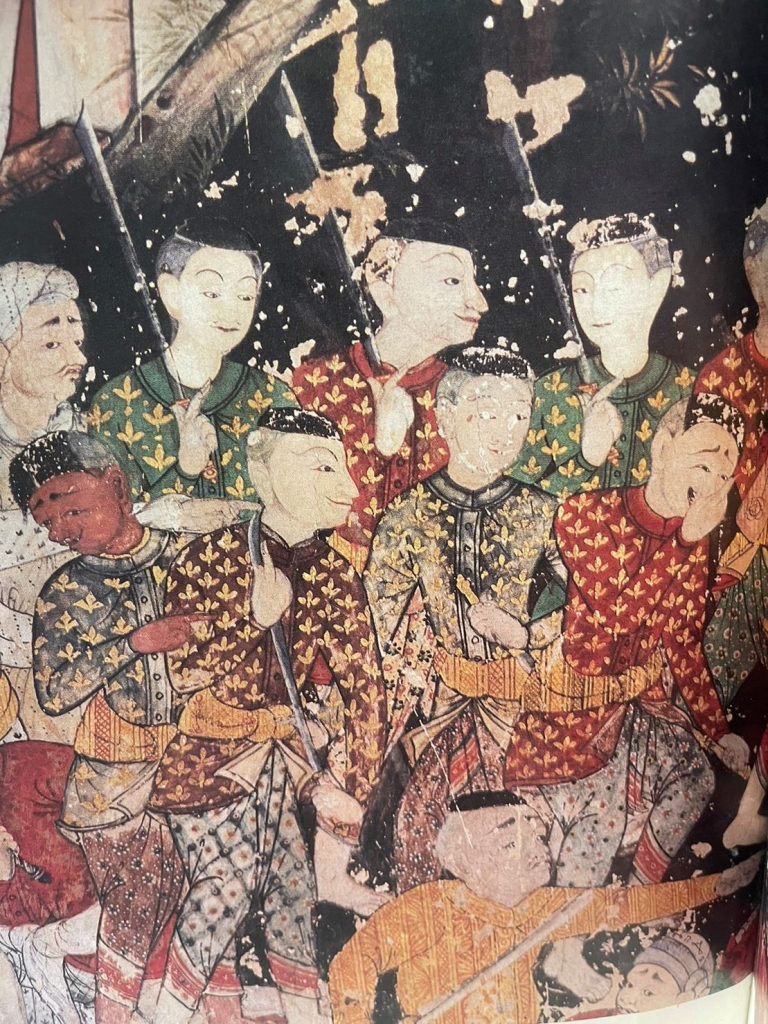
Atlad shirt – It is a costume of a high-ranking male minister in the front in the early Rattanakosin period. weaving with gold silk or silver silk or weaving with colored silk Jok is in various patterns, like flowers floating far away. You can see a lot of fabric This type of fabric is commonly used to cut into the clothes of royalty and nobility’s clothes. or used to make a panung The origin of this type of fabric is from India or Persia. (present-day Iran)
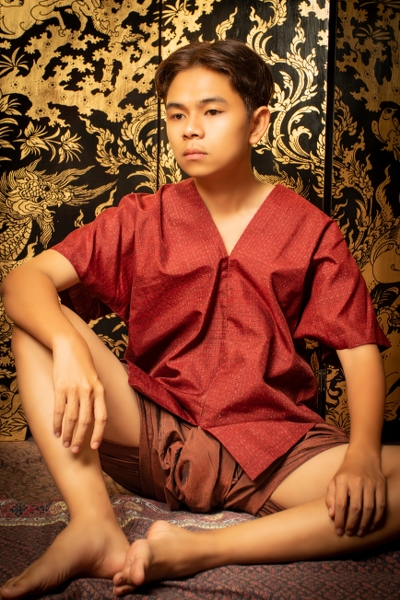
Kor lam was a popular shirt choice, reflecting a casual look during the Ayutthaya era through early Rattanakosin. These shirts featured a V-neck and curved hems, with the fabric cinched around the waist. Available in both short-sleeve and long-sleeve variations, Kor lam provided a relaxed yet stylish attire option during that period.
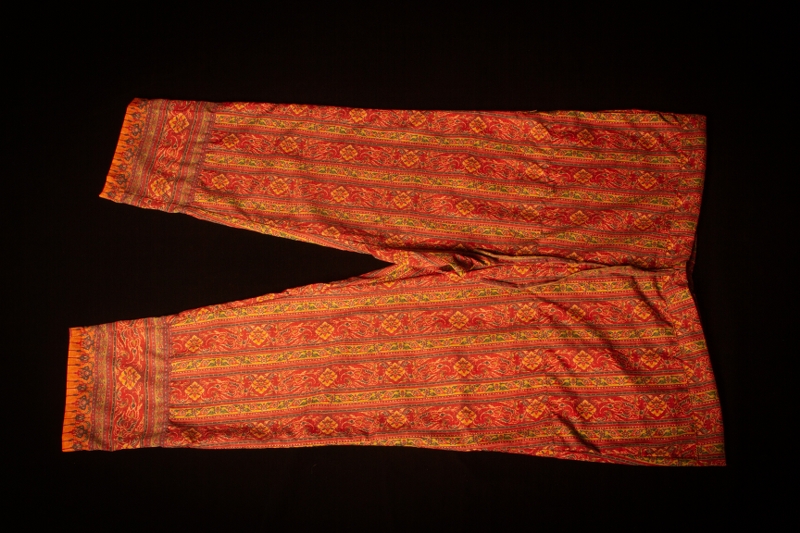
Sanub-Plao is a shin-length trousers. Styled with curved up hems on both legs. Men usually wear this trousers underneath before putting on loincloth.
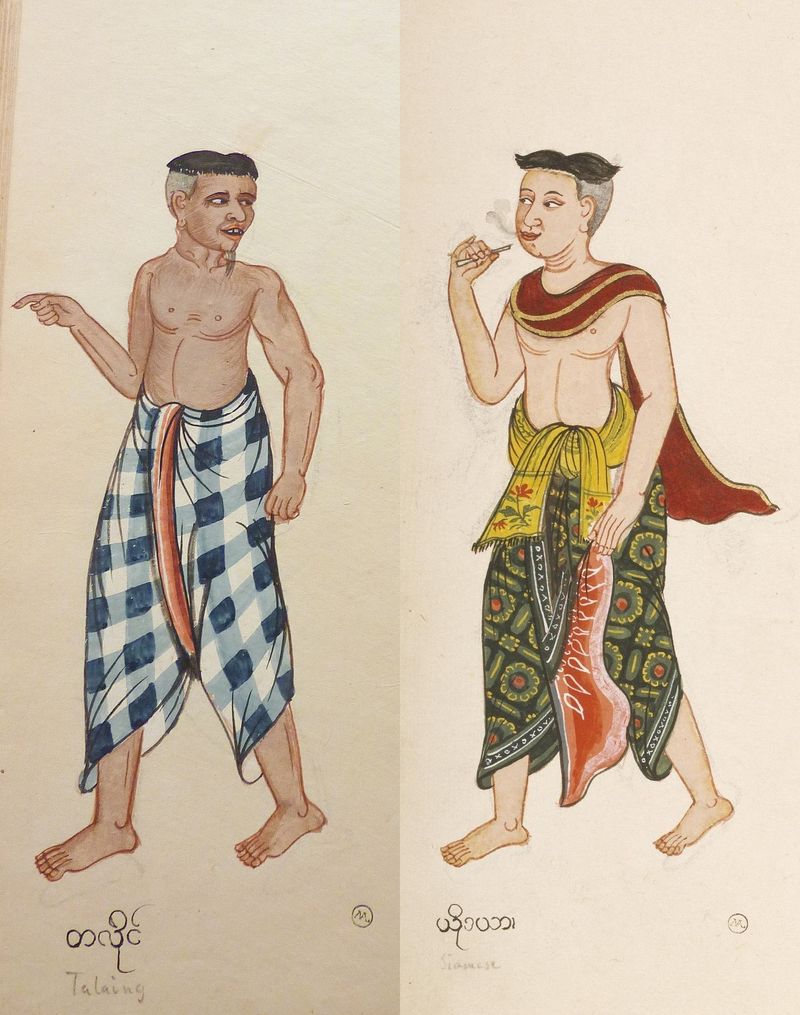
Regarding popular hairstyles, during the early Ayutthaya period, the “Song-Khadong” hairstyle gained popularity, along with the “Mahad Thai” hairstyle. The Mahadthai style involves leaving the hair on the top of the head and parting it in the middle, while the hair around the head is cut short, and the nape of the head is shaved. Over time, the practice of having hair in the interior became prevalent from the middle of the Ayutthaya period onwards
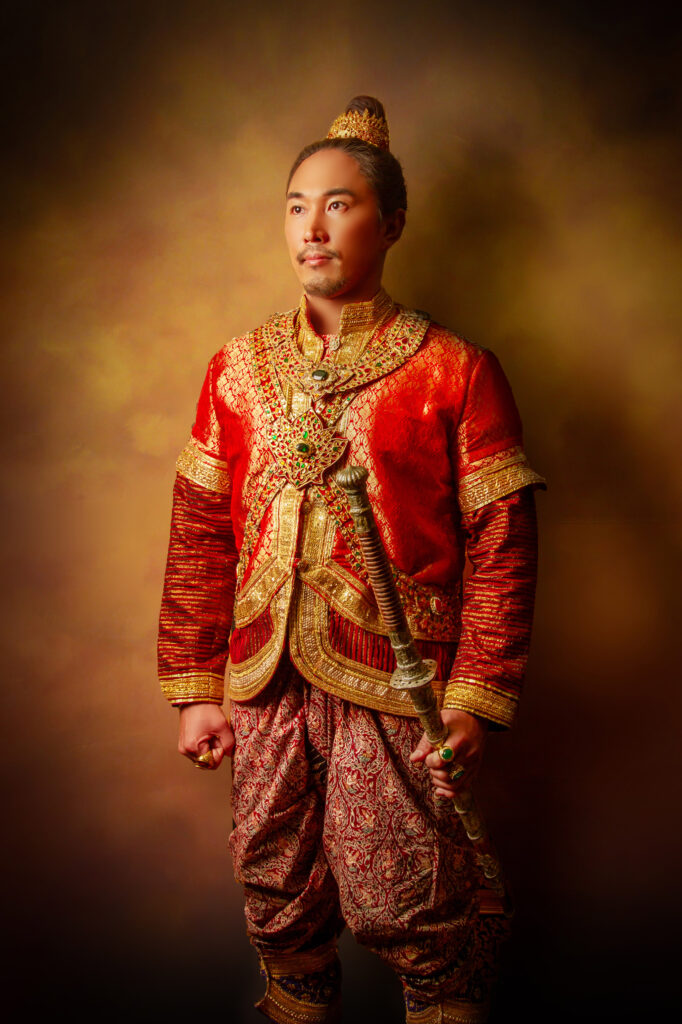
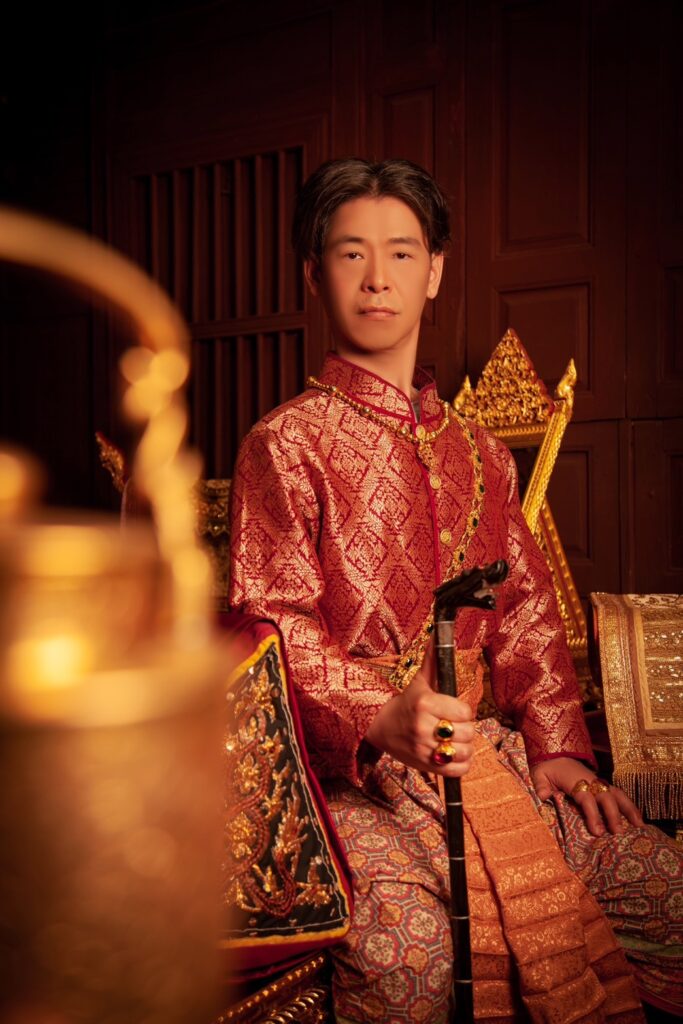
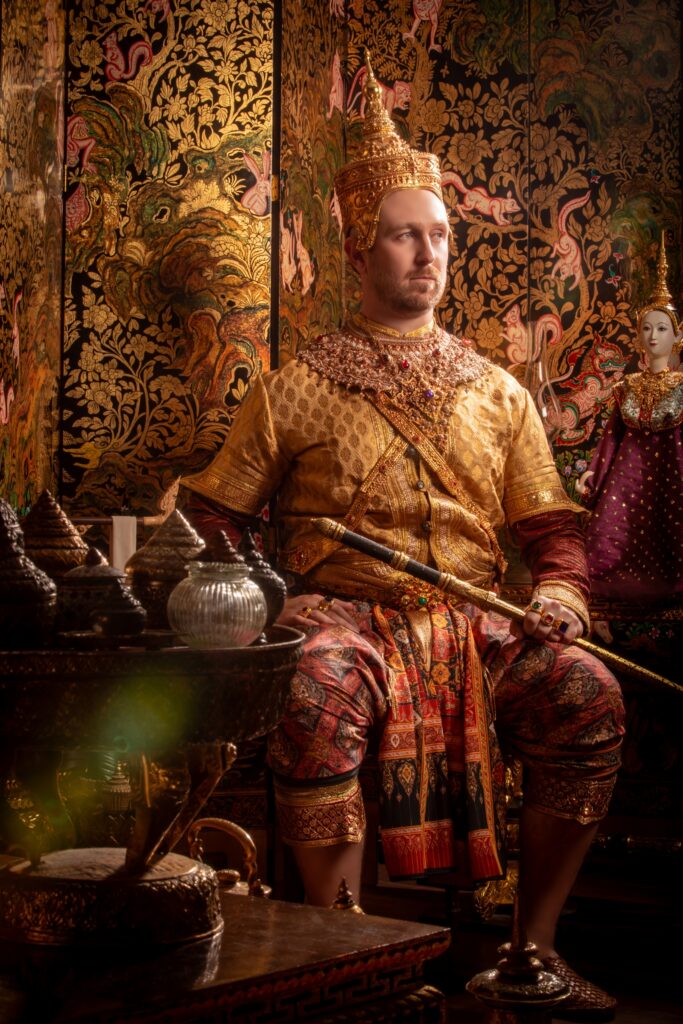
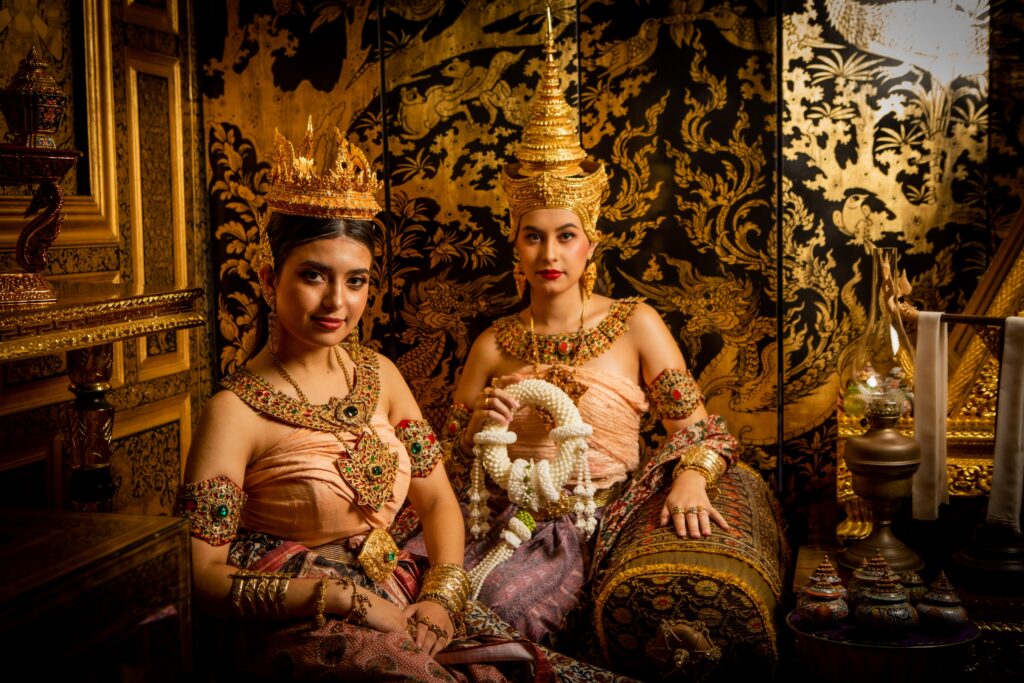
An author assistant Nonthawat Ningjaiyen
TRULY THAI AUTHENTIC YOU CAN BE
>>ติดตามเรื่องราวความเป็นไทยอย่างใกล้ชิดที่ Thai Style Studio<<
เพราะเราเชื่อว่า “มากกว่าความรู้สึก คือ การได้สัมผัสประสบการณ์ความเป็นไทยด้วยตัวคุณเอง”
